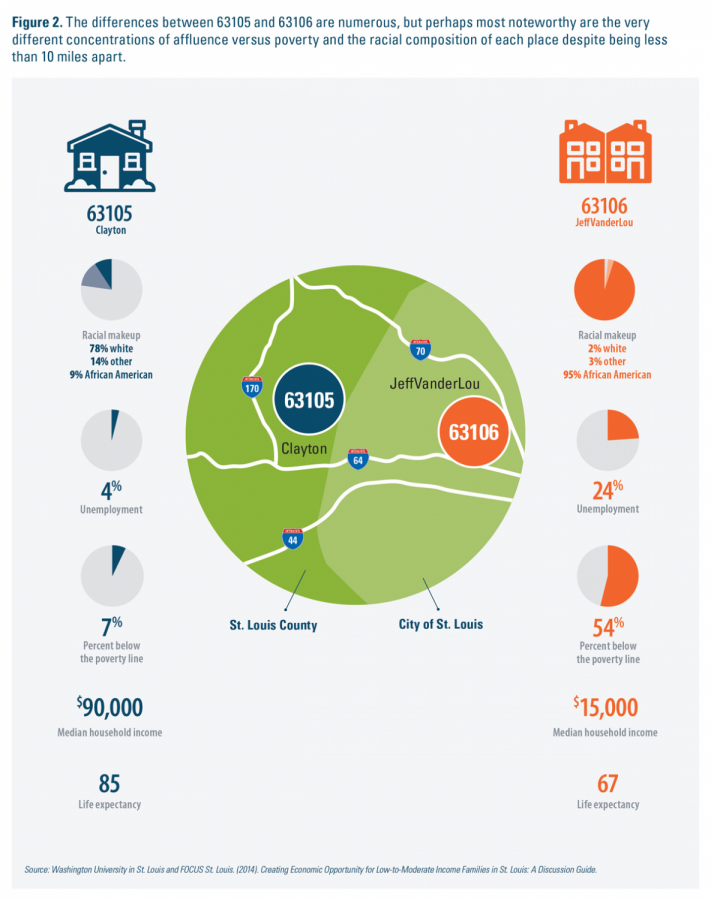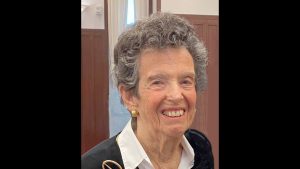Building stronger connections between local Black and Jewish communities
Published December 16, 2020
I hope you have taken the time to read the story about Misha Marshall and her family that starts on Page 1A, by Leyla Fern King. It’s a compelling and well-written piece though admittedly not your typical Jewish Light story in that neither the subject(s) of the narrative nor the writer is Jewish.
So then why is it in the Light?
Our Jewish values teach us to care not only for our fellow Jews but for everyone. Many area synagogues have social justice initiatives, the objective of which is to repair the world, tikkun olam. A number of these groups work with people living in some of the poorest neighborhoods in the St. Louis area, including those in the 63106 ZIP code, where the Marshalls live.
Karen Kalish, a member of Central Reform Congregation, for example, is currently championing a program with Patrick Henry Downtown Academy to assure that all 231 students have reliable access to the internet so they can be successful at virtual distance learning. (Another program supplied each student with Apple iPads.) Patrick Henry, which serves children from pre-kindergarten to fifth grade, is located in the 63106 ZIP code.
Now let’s engage in what we sometimes call “Jewish Geography.” Many St. Louis Jews will find their roots in 63106. As noted in the St. Louis Public Library’s genealogy file, Jews started immigrating to St. Louis in increasing numbers between 1880 and 1920, settling initially in an area on the near north side of St. Louis between Cass Avenue on the north and Delmar Boulevard on the south, spreading westward from the riverfront.
As an example in 1905, Morris Jaffe, opened the Good Luck Store, a retail clothing store for boys and men, just a few blocks from where the Marshalls now live. Now fast forward more than a century. Jaffe’s great-great grandson Adam Jaffe and the writer, Leyla Fern King, are friends. They met while participating in the Cultural Leadership programthat brings together local Jewish and African American students to learn about African American and Jewish history and how they intertwine. That program, by the way, was also founded by Kalish.
The 63106 Project grew out of another enterprise, now a non-profit, called Before Ferguson Beyond Ferguson, (BFBF) a racial equity storytelling project that was created by Richard H. Weiss, a former editor at the Post-Dispatch, and Sally J. Altman, who are married and CRC members. BFBF aims to tell stories of local African-American families who have struggled over generations in our town to gain their purchase on the American Dream. Initially, these were long-form stories researched, written, photographed and video-recorded under Weiss’ supervision with a diverse team of more than a dozen journalists, including myself.
BFBF team members dedicated their work toward creating a culture of understanding and empathy in our community that would support the racial equity recommendations of the Ferguson Commission. Our team felt fortunate and gratified when mainstream media outlets including the Post-Dispatch, St. Louis Public Radio, KTRS-AM and St. Louis Magazine, as well as the St. Louis American, reproduced and promoted these stories in one form or another for their audiences.
Then late this past winter the pandemic came along, and a decision was made to switch gears and create the 63106 Project, with a focus on families living in neighborhoods identified as having the most problematic social determinants of health. According to the For Sake of All Report, produced by academicians and researchers at St. Louis University and Washington University’s Brown School of Social Work, a child born in 63106 in 2010 had a life expectancy of 67; a child born in 63105, just six miles away, one digit removed, could expect to live to age 85. An 18-year differential. And that was before the pandemic.
These stories have been appearing in even more St. Louis media outlets, now including the Jewish Light.
The year 2020 is one few of us are likely to forget — though many of us would like to — but one positive outcome is that it has brought a paradigm shift in the way Jews (and others) think about Black lives. It is, for instance, why the Jewish Community Relations Council created JCRE, the Jewish Coalition on Racial Equity. Then again, this is also part of what Jews have always done — to question conventions and adjust to the times.
In the coming year, the Light will continue to chronicle the Marshall family, providing additional stories as circumstances dictate through the ongoing pandemic and beyond. I hope you’ll follow along with us.
Cultural Leadership and Before Ferguson Beyond Ferguson will co-host members of the Marshall family and author Leyla Fern King in a Zoom session at 3 p.m. Sunday, January 24 in which the Marshalls will talk about their lives in their 63106 neighborhood. You can reserve a spot by by joining the e-mail list at beforefergusonbeyondferguson.org.














